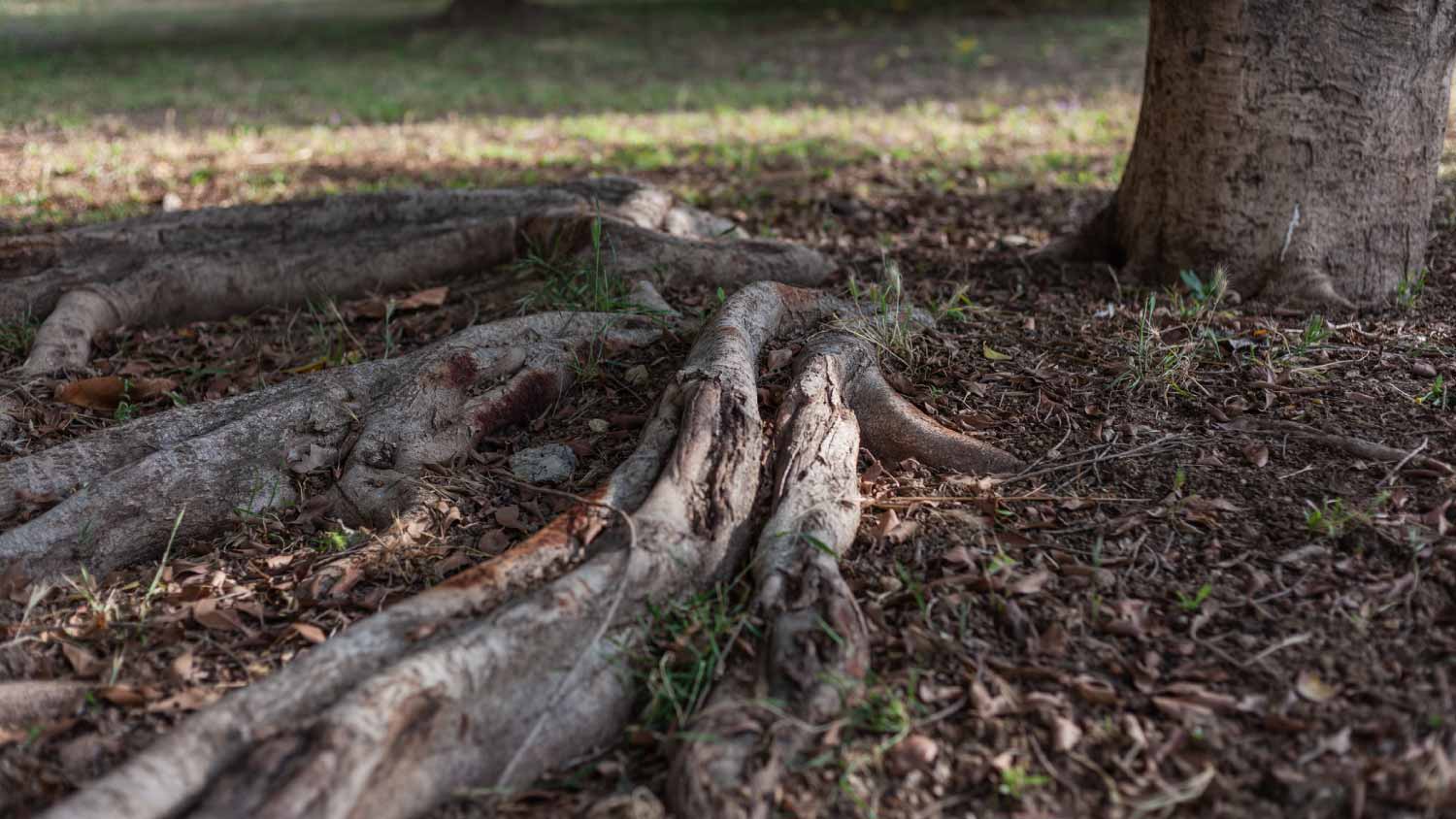
Trimming your bushes is one of the less costly aspects of landscaping, and it’s helpful to bundle many trimming services together to save money.
Nip the problem without cutting ties completely


Cutting tree roots does not always result in the death of a tree.
Whether the trimming affects the tree depends on the severity of the cut, the age and health of the tree, and what season of growth the tree is in.
You can cut roots without causing harm to your tree by trimming less than ⅓ of small roots that are located away from the trunk with the proper tools.
If you’re uncomfortable cutting roots yourself, contact a tree removal expert near you.
A tree’s roots are crucial to its overall health, as the roots act as anchors that secure the tree against harsh conditions. In some cases, cutting tree roots can kill the tree, but not always. Our guide takes you through the factors that affect whether trimming tree roots is harmful to your tree and how to prevent worst-case scenarios.
Although it’s a risky move, cutting tree roots doesn’t always lead to a tree’s death. In most cases, you can cut up to 25% of your tree’s roots without causing permanent damage. Whether or not your tree survives depends on a number of variables, including what stage of growth your tree is in and how deep you cut the roots.
Let’s dig into the factors that affect whether snipping tree roots will negatively impact its health.
Minor cuts to feeder roots, which are responsible for absorbing water and nutrients, won’t significantly impact your tree. In fact, it can usually grow feeder roots back if needed. However, severe cuts to large, structural tree roots can compromise your tree’s stability and potentially lead to death.
Young, healthy trees are more likely to tolerate cuts to their roots without affecting their growth, as they usually grow back the roots they need and continue to thrive. Older trees that have been weakened by stress or tree disease are less likely to survive cuts to their roots as they are unable to grow new roots as easily.
Avoid cutting tree roots during spring or summer, which is when most trees are in active growth season. This period is the most stressful for trees and can limit their ability to recover from injury if you cut too deep into their root system. Consider cutting roots during dormant seasons like fall or winter when it’s less harmful to trees.

Although consulting your local arborist or tree stump removal professional is your best bet, there are other measures you can take when cutting tree roots to prevent damage to the tree. Try these tactics when severing roots:
Avoid cutting large, structural roots and opt for trimming smaller roots
Steer clear of roots located within 3 to 5 times the trunk’s diameter
Make clean cuts with the proper tools for the type of roots you’re cutting
Refrain from cutting more than 25% of the tree’s roots at once
After trimming roots, water the tree and apply mulch around the base without touching the trunk
Call an arborist if you notice wilting leaves, yellowing or leaning in the tree
From average costs to expert advice, get all the answers you need to get your job done.

Trimming your bushes is one of the less costly aspects of landscaping, and it’s helpful to bundle many trimming services together to save money.

The cost to remove palm trees depends on several factors, including their size, location, and more. Our guide shows the average palm tree removal costs.

Find out how much it costs to plant a tree based on the number of trees, their size, where you want to plant them, and DIY versus professional costs.

If you want your peach tree to provide you with fruit all summer long, you’ll need to keep up with pruning. Learn when and how to prune a peach tree.

Learn how to move a palm tree while avoiding irreparable damage. Using these steps to transfer a palm tree to a new spot.

Pruning a cherry tree requires pruning tools, some skills, and the right techniques. Read this guide to learn how to prune a cherry tree like a pro.